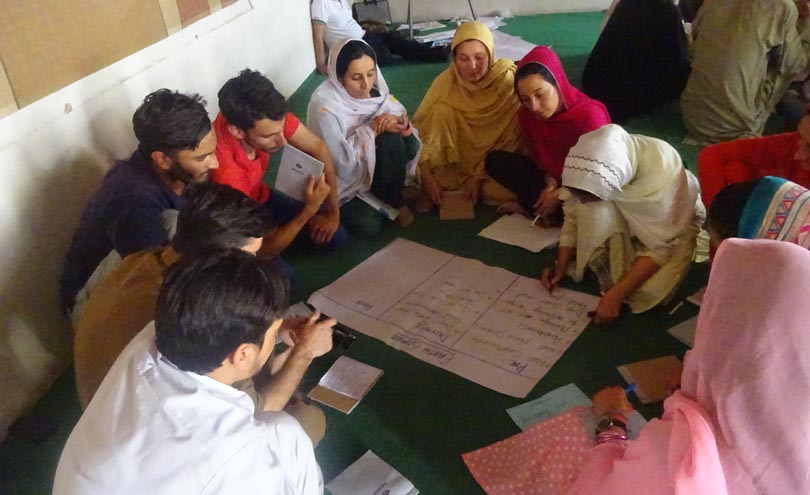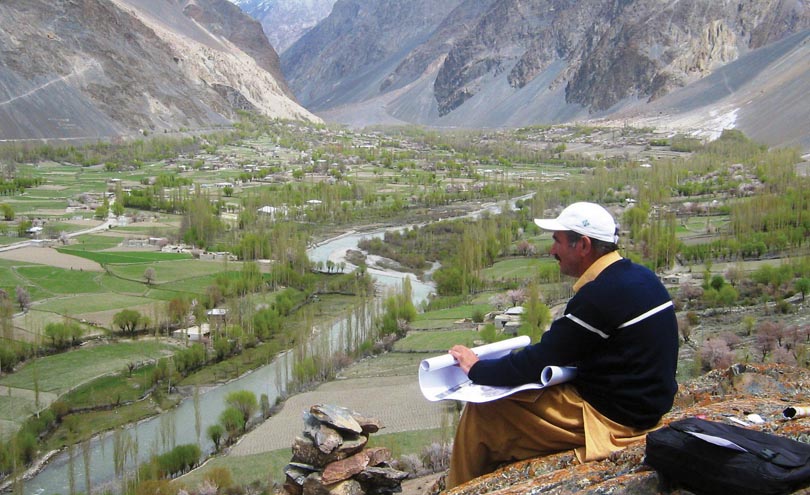Pakistan has suffered an estimated US $18 billion in damages and losses as a result of disasters over the past decades. The northern mountainous areas – home to some of the most disadvantaged and isolated communities – are especially vulnerable to earthquakes, floods and many other hazards that have caused significant damage in recent years. Although international and national agencies have undertaken work on disaster preparedness at different levels, the integration of hazard, vulnerability and risk assessments (HVRAs) into planning processes – for disaster preparedness, response, rehabilitation and development – is rare.
The Integrating indigenous knowledge and technology for safer habitat approach set up by the Aga Khan Agency for Habitat, Pakistan (AKAH Pakistan) integrates disaster-risk management into habitat planning and development projects at village and community levels. AKAH Pakistan introduced community-based HVRAs in the country for the first time in 2004, combining local and scientific knowledge to map risks, determine residential and economic zones, and develop disaster management plans. AKAH geologists use satellite images and risk-mapping tools, with participation from residents, who contribute local knowledge and receive training on the process. This enables them to build in safer areas and protect against hazards.
To date, AKAH Pakistan has conducted HVRAs in 785 settlements, mostly in the mountain areas of Gilgit-Baltistan and Chitral regions – home to more than one million people. The project has provided more than 20,000 households with technical assistance in maintaining and improving their homes, constructed over 4,000 shelters for internally displaced people, and created more than 280 community disaster management plans. Weather monitoring posts and community-based early warning systems are also installed. Over 50,000 community volunteers have been trained across Pakistan in community-based disaster risk management. Alongside AKAH, they have responded to over 200 disasters and – through HVRAs – identified 50 extremely hazard prone settlements for relocation. AKAH Pakistan has also established 190 community-managed emergency stockpiles, which include tents, blankets, search and rescue tools and first aid kits.





















